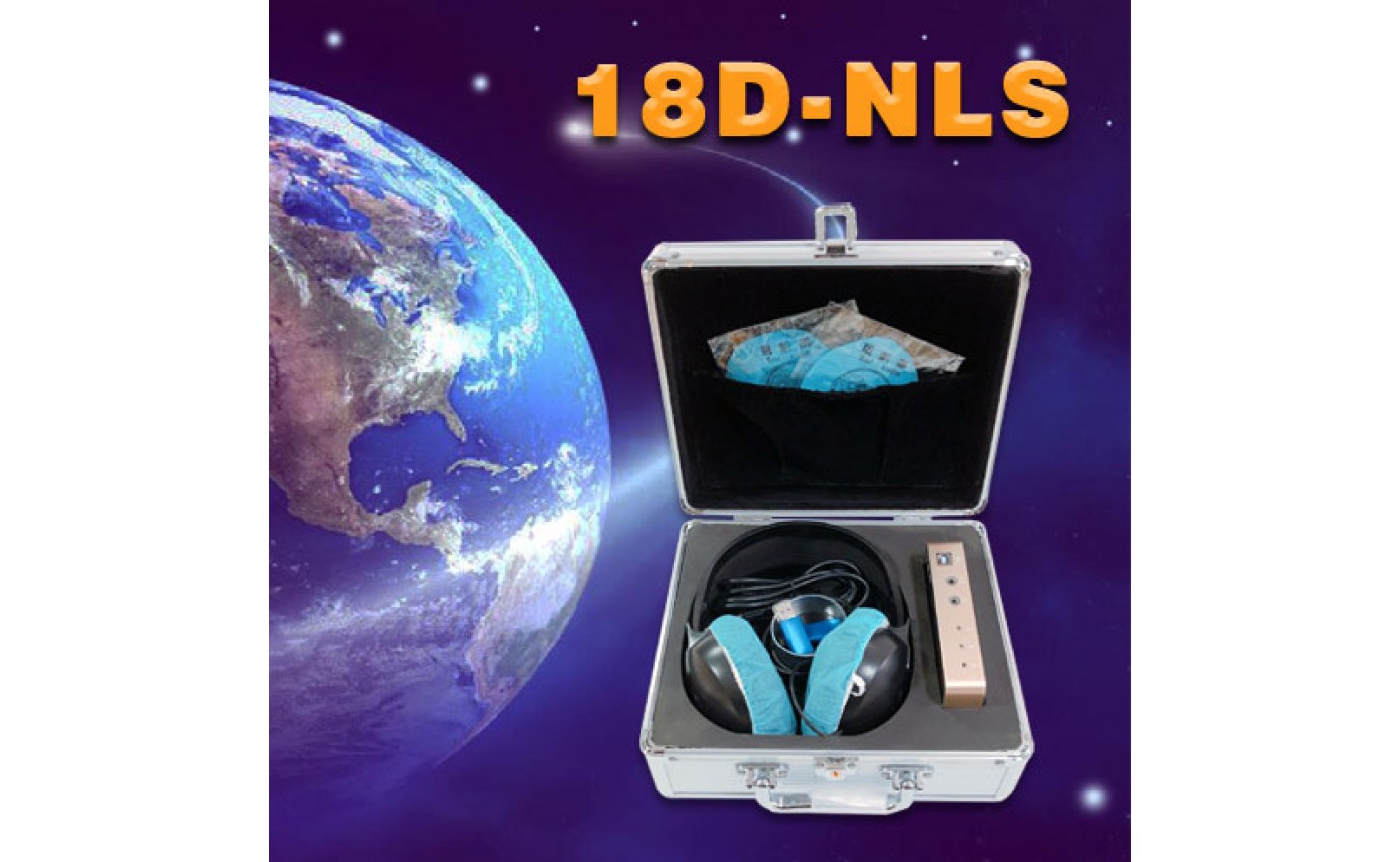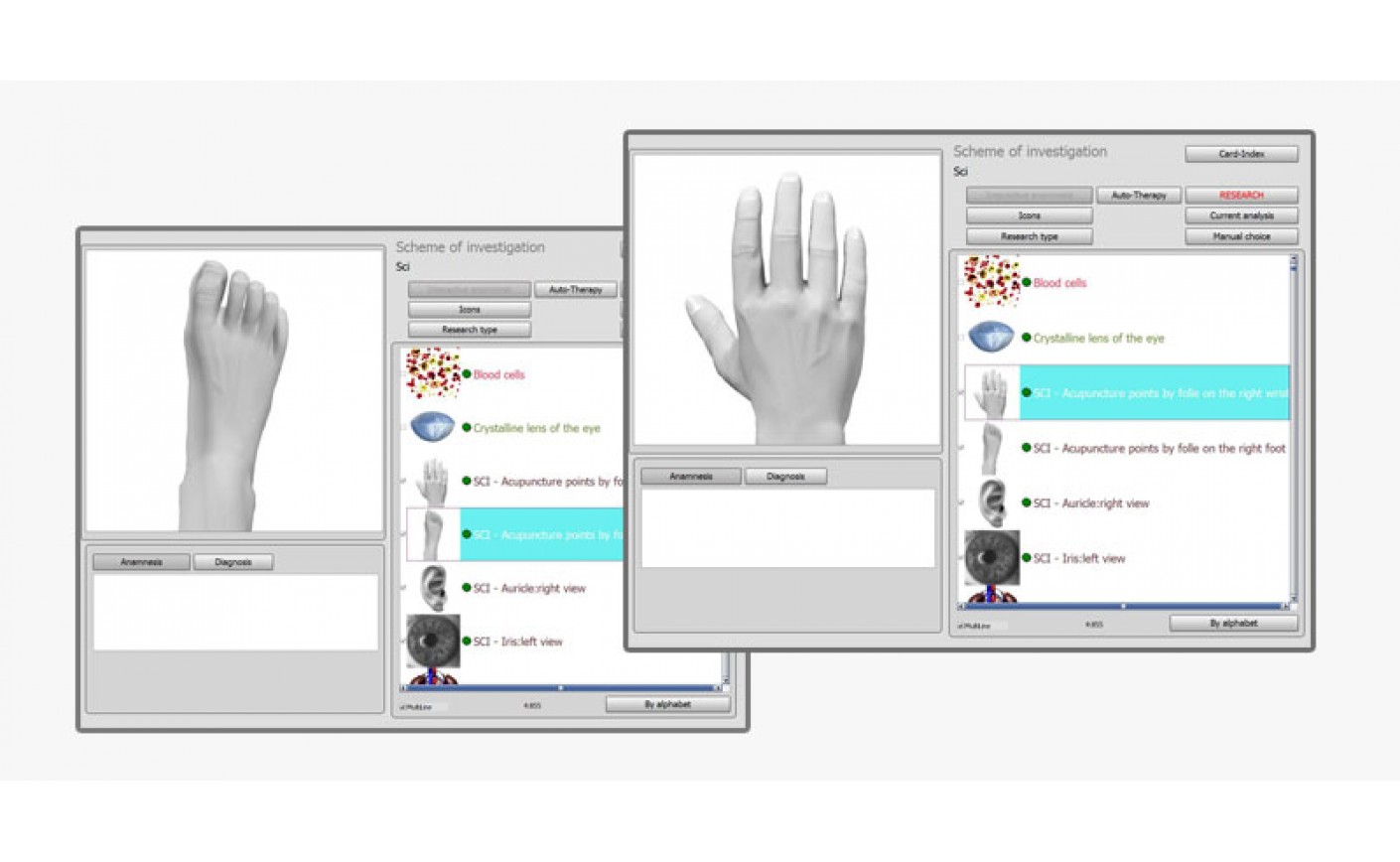18D NLS "rescue" cholecystitis
Cholecystitis is a more common disease with a higher incidence. According to its clinical manifestations and clinical experience, it can be divided into two types, acute and chronic, which often coexist with cholelithiasis. Severe pain or colic in the right upper abdomen is more common in acute cholecystitis caused by stones or parasites incarcerated and obstructed the neck of the gallbladder. The pain often comes on suddenly, severely, or colic-like. In cystic duct non-obstructive acute cholecystitis, the pain in the right upper abdomen is generally not severe, mostly continuous pain. With the progress of gallbladder inflammation, the pain can also aggravate, and the pain is radioactive. The most common radiation sites are the right shoulder and The lower corner of the right shoulder blade and other places.
Therefore, we must not only pay attention to our physical condition in our daily life, but also use 18D NLS equipment to help us. 18D NLS equipment is now a very popular sub-health analyzer equipment that can detect our physical health status and trends.
Cause
Sudden obstruction or incarceration of the cystic duct in the gallbladder causes acute cholecystitis. Torsion and stenosis of the cystic duct and obstruction of biliary ascaris or bile duct tumors can also cause acute cholecystitis. In addition, during the aging process, the gallbladder wall gradually becomes hypertrophy or atrophy, and its contractile function decreases, resulting in bile stasis, concentration and formation of bile salts; the end of the common bile duct and the Oddi sphincter become loose, prone to retrograde infection; systemic arteries Atherosclerosis and increased blood viscosity can aggravate gallbladder artery ischemia. After cystic duct or gall bladder neck obstruction, the stagnant bile in the gallbladder is concentrated to form cholate, which stimulates the gallbladder mucosa to cause chemical cholecystitis (early stage); at the same time, bile retention increases the pressure in the gallbladder, and the expanded gallbladder is the first to affect The venous and lymphatic reflux of the gallbladder wall, congestion and edema of the gallbladder, when the internal pressure of the gallbladder is more than 5.39kPa (55cmH2O), the arterial blood flow of the gallbladder wall is blocked, the gallbladder suffers ischemic damage, and the ischemic gallbladder is prone to secondary bacterial infection. Exacerbate the course of cholecystitis, and eventually complicated by gallbladder gangrene or perforation. If the cystic duct is obstructed without blood circulation and bacterial infection of the gallbladder wall, it develops into gallbladder effusion. Recent studies have shown that phospholipase A can be released from damaged gallbladder mucosal epithelium due to cholestasis or stone incarceration, hydrolyzing lecithin in bile into lysolecithin, which in turn changes the integrity of mucosal epithelial cells and causes acute gallbladder inflammation.
Clinical manifestations
1. Acute cholecystitis
The clinical manifestations of acute calculous cholecystitis are basically the same as those of acute acalculous cholecystitis.
(1) Symptoms ŌæĀPain, severe pain or colic in the right upper abdomen, most of which is acute cholecystitis caused by stones or parasites incarcerated and obstructed the neck of the gallbladder; the pain often comes on suddenly, severely, or appears colic-like, mostly in After eating high-fat foods, it mostly occurs at night; general pain in the right upper abdomen is seen in non-obstructive acute cholecystitis of the cystic duct. The pain in the right upper abdomen is generally not severe, mostly continuous pain. As the gallbladder inflammation progresses, pain It can also be aggravated, and the pain is radioactive. The most common radiation sites are the right shoulder and the lower corner of the right scapula. It is caused by gallbladder inflammation that stimulates the right phrenic nerve endings and the peripheral nerves of the abdominal wall. ŌæĪNausea and vomiting are the most common symptoms, such as stubborn or frequent nausea and vomiting, which can cause dehydration, collapse, and electrolyte disturbances, which are more common when stones or roundworms obstruct the cystic duct. Ōæó Chills, chills, and fever. Mild cases often have chills and low-grade fever; severe cases may have chills and high fever, with a fever above 39┬░C, and mental symptoms such as delirium and delirium may occur. ŌæŻJaundice is rare, if jaundice is generally mild, it means that the infection has spread to the liver through the lymphatic vessels, causing liver damage, or the inflammation has invaded the common bile duct.
(2) Main physical signs. Abdominal examination showed tension, tenderness, rebound pain, and Murphy sign positive in the right upper abdomen and the middle of the upper abdomen. Accompanied by gallbladder empyema or perigallbladder abscess, a tender mass or obviously enlarged gallbladder can be palpated in the right upper abdomen. When abdominal tenderness and abdominal muscle tension extend to other areas of the abdomen or the entire abdomen, it indicates gallbladder perforation. Or have acute peritonitis. There are 15% to 20% of patients due to pericystic duct edema, gallstone compression and perigallbladder inflammation causing liver damage, or inflammation involving the common bile duct, resulting in Oddi sphincter spasm and edema, leading to obstruction of bile drainage, and mild jaundice. If the jaundice is obviously deepened, it means that the common bile duct is accompanied by stone obstruction or the possibility of cholangitis. In severe cases, signs of peripheral circulatory failure may appear. Blood pressure is often low, and septic shock may even occur, which is especially common in severe cases of purulent gangrene.
2. Chronic cholecystitis
(1) Symptoms of persistent dull pain or discomfort in the right upper abdomen; symptoms of indigestion such as nausea, belching, acid reflux, abdominal distension and heartburn; pain in the right lower scapular area; symptoms worsen after eating high-fat or greasy food; the course of the disease is long During the course of the illness, there is the characteristic of alternating acute attack and remission. The symptoms of acute attack are the same as those of acute cholecystitis, and there may be no symptoms in the remission period.
(2) Signs The gallbladder area may have mild tenderness and percussive pain, but no rebound pain; cholestasis may be palpable to an enlarged gallbladder; during an acute attack, there may be muscle tension in the right upper abdomen, normal body temperature or low fever, occasionally Jaundice may occur. The tender point of the gallbladder is at the intersection of the outer edge of the right rectus abdominis muscle and the costal arch, the tender point of the thoracic spine is 8-10 thoracic vertebrae, and the tender point of the right phrenic nerve is between the two lower corners of the sternocleidomastoid muscle on the right side of the neck.
With 18D NLS equipment, we can not only know the health changes of our body well, but also can treat our physical diseases through 18D NLS equipment, thereby making us healthier.
diagnosis
1. Acute cholecystitis
ŌæĀ Eat greasy food as a trigger. ŌæĪ Sudden continuous severe pain in the right upper abdomen accompanied by paroxysmal aggravation, which may radiate to the right scapula, often with nausea, vomiting, and fever. Ōæó There is tenderness and muscle tension in the right upper abdomen, Murphy's sign is positive, and jaundice can be seen in a few. ŌæŻThe white blood cell and neutrophil counts are increased, and the serum jaundice index and bilirubin may be increased. ŌæżB-ultrasound shows gallbladder enlargement, thickened or rough gallbladder wall, floating light spots in the cyst, and stone images can be seen when accompanied by stones. ŌæźX-ray examination: plain film of the abdomen in the gallbladder area may show the shadow of gallbladder enlargement.
2. Chronic cholecystitis
ŌæĀPersistent dull pain or discomfort in the right upper abdomen, or accompanied by pain in the right scapular area. ŌæĪIndigestion symptoms such as nausea, belching, acid reflux, abdominal distension and heartburn, which are aggravated by eating greasy food. ŌæóLong course of disease, with the characteristics of acute attack and remission after the course of the disease. ŌæŻ There may be mild percussive pain in the gallbladder area. Ōæż The mucus in the bile is increased, the white blood cells are piled up, and the bacterial culture is positive. ŌæźB-ultrasound shows gallbladder stones, thickening of the gallbladder wall, shrinkage or deformation of the gallbladder. Ōæ” Gallstones, shrinkage or deformation of the gallbladder, poor contraction of the gallbladder, or weak gallbladder development can be seen on cholecystography.
treat
1. General treatment
ŌæĀ Actively prevent and treat bacterial infections and complications, pay attention to dietary hygiene, prevent the occurrence of biliary parasitic diseases, and actively treat intestinal ascariasis. ŌæĪBe restrained in daily life, pay attention to the combination of work and rest, suitable for cold and temperature, and maintain optimism and smooth bowel movements. ŌæóIf the disease has stones, or frequent attacks, surgery can be considered. ŌæŻ Low-fat meals should be used to reduce bile secretion and reduce the burden on the gallbladder.
2. Medication
(1) Acute cholecystitis ŌæĀ Antispasmodic and analgesic Intramuscular injection of atropine, sublingual nitroglycerin, pethidine (meperidine), etc. can be used to relieve Oddi sphincter spasm and pain. ŌæĪAntibacterial treatment. Antibiotics are used to prevent bacteremia and purulent complications. Ampicillin (Ampicillin), Clindamycin (Clindamycin) and aminoglycosides are usually used in combination, or the second Substitute cephalosporins such as cefmandol (ceftidol) or cefuroxime for treatment. The replacement of antibiotics should be based on blood culture, bile culture during surgery, bacterial culture of the gallbladder wall, and the results of drug sensitivity tests. ŌæóCholestatic drugs 50% magnesium sulfate orally (not used for those with diarrhea), dehydrocholic acid tablets orally, and cholic acid tablets orally.
(2) Chronic cholecystitis ŌæĀ Choleretic drugs 50% magnesium sulfate, dehydrocholic acid tablets, etc. can be taken orally. ŌæĪ Deworming therapy Deworming for the cause. Ōæó Litholysis Therapy If it is caused by cholesterol stones, chenodeoxycholic acid can be used for treatment. According to the literature, the effective rate of dissolving stone can reach about 60%. After the course of treatment is over, a maintenance dose is still required to prevent recurrence.
(3) Reasonable selection of Chinese patent medicines ŌæĀ Jindan Tablets Function: Anti-inflammatory and choleretic. For acute and chronic cholecystitis. ŌæĪQinggan Lidan Oral Liquid Function: clearing liver and gallbladder damp-heat. Indications of appetite, hypochondriac pain, fatigue, yellow urine, greasy fur, chord pulse, stagnation of liver and qi, unclear liver and gallbladder damp-heat and other diseases.
3. Surgical treatment
Cholecystectomy is the fundamental treatment for acute cholecystitis. Indications for surgery: ŌæĀPatients with gallbladder gangrene and perforation, complicated by diffuse peritonitis; ŌæĪPatients with recurrent acute cholecystitis with clear diagnosis; ŌæóPatients with active medical treatment, whose condition continues to develop and worsen; ŌæŻWith no contraindications to surgery, and able to withstand The person undergoing surgery. Chronic cholecystitis accompanied by gallstones; once the diagnosis is established, cholecystectomy is a reasonable and fundamental treatment. If the patient has serious diseases such as heart, liver, lung, or the general condition cannot tolerate surgery, medical treatment can be given.
Regardless of whether our body has disease or not, we can use 18D NLS equipment, because 18D equipment can not only detect and treat, it can enhance our own immunity before the disease occurs, so that we are healthier and better resist external diseases.


